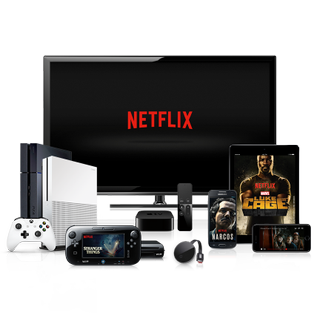Survey: Netflix Still Tops Among Streamers
Netflix is still the No. 1 service for streaming video users, but YouTube TV, Hulu and Amazon Prime are gaining ground while HBO Now and authenticated TV apps are in decline, according to Morgan Stanley’s ninth annual streaming video survey.

About 48% of respondents to the survey — conducted by research group Alpha Wise and Morgan Stanley — reported using Netflix, up about 210 basis points from the previous year. In addition, most of the usage growth for Netflix came more from broadband-only subscribers instead of pay TV customers. And all three of the top reasons for using Netflix were tied to the SVOD pioneer’s content.
About 41% said they used YouTube TV, up 450 basis points from last year, while 33% said they used Amazon Prime Video and 24% used Hulu.
While the marquee services gained ground, other streaming offerings like HBO Now, CBS All Access and authenticated TV services lost viewership. According to the survey, HBO Now fell the hardest — only 7% of respondents said they were users, a 1,500-basis-point decline. About 4% said they used CBS All Access (an 80 basis point decline) and just 3% said they used authenticated TV (down 180 bp from the prior year).
Netflix users also were more apt to muse other streaming services. According to the survey, about half of Netflix users also use Prime Video — about 66% of Prime Video users also reported using Netflix. And Netflix (41%) and Prime Video (34%) customers are also more likely to subscribe to Hulu.
Netflix’s reputation as a place for high-quality content also has grown. According to the survey, only about 17% of Netflix users said Netflix was the best place for original programming in 2014, while 40% picked them as the top destination for originals in 2019.
About 37% of those surveyed said they were interested in Disney+ service at about $8 per month — the survey was done before Disney announced the streaming product would have a monthly price tag of $6.99. Understandably, the Disney+ service was more popular with parents — about 60% of those respondents with children expressed some level of interest.
Multichannel Newsletter
The smarter way to stay on top of the multichannel video marketplace. Sign up below.
While programmers struggle with ways to promote shows as the landscape gets increasingly crowded, most respondents to the survey said word of mouth was the primary way they learned about programming. About 55% of those surveyed picked word of mouth as the way they discovered content, followed by the trailer at 50%. Social media, recommendation engines and paid advertising only garnered 20% each.
Price sensitivity also is becoming a factor, but mainly with older nonsubscribers. Netflix raised its prices in January by about 18%. According to the survey, only 36% of Netflix users said the price point was a reason to subscribe (compared to 52% a year ago), while 41% of non-users said they would subscribe to Netflix if the price was lower (compared to 34% a year ago).
RELATED: Fitch: Netflix Sub Growth Momentum a Concern
The survey also found that streaming ran across several different income levels, but that the generational skew was more significant. More that 73% of respondents aged 18-35 used Netflix and 44% used Amazon Prime Video, compared to just 25% of people aged 65 or older subscribing to Netflix and 23% of that group using Amazon Prime Video. Adoption among different income groups was less stark — about 42% of people with annual incomes $25,000 or less used Netflix, while 56% of those with incomes above $100,000 annually using the service.
Morgan Stanley saw an opportunity for Hulu to invest more in original programming to boost its subscriber base. According to the survey about 49% of Hulu customers selected “has my favorite TV shows,” as the top reason to watch, reflecting the service’s access to in-season streaming rights from many of the broadcast networks.
“Much like Netflix years ago, it will likely now use the scale it built from this licensed IP (25 million paid users in the U.S.) to build out exclusive originals,” Morgan Stanley said.
At the same time, customer satisfaction with pay TV services appeared to remain consistent — around 45% said they were “very satisfied” with their pay TV service. Virtual MVPDs had the highest satisfaction rates. YouTube TV was highest with 68% claiming to be “very satisfied,” followed by DirecTV Now (64%) and Hulu with Live TV (61%). Cable operators scored lowest, with Comcast at 41% “very satisfied,” Charter Communications at 36% and Cox Communications at 34%.
RELATED: Hulu Buys AT&T Stake for $1.5B
Morgan Stanley said the survey was conducted online with a sample size of 3,041 adults aged 18-plus, with 46% of the sample being men and 54% women. Conclusions based on the total sample have a maximum margin of error of 1.5% at a 90% confidence level.










